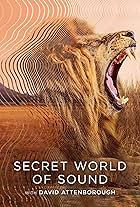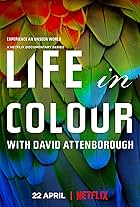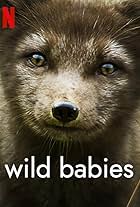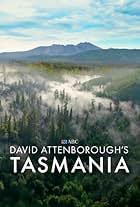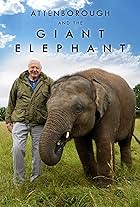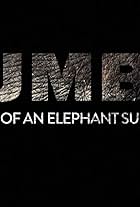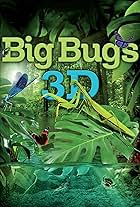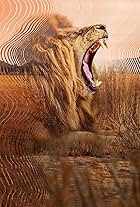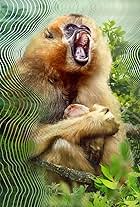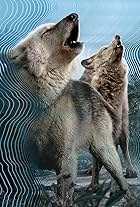Advanced search
- TITLES
- NAMES
- COLLABORATIONS
Search filters
Enter full date
to
or just enter yyyy, or yyyy-mm below
to
to
to
Exclude
Only includes titles with the selected topics
to
In minutes
to
1-46 of 46
- Advanced audio tech reveals never-before-heard animal behaviors: caiman chirping in eggs, lions and hyenas nocturnal skirmishes, puzzling fish humming, avian mimicry precision.
- Exploring the many ways animals use colour throughout their lives.
- Follow the adventures of baby lions, elephants, penguins, pangolins and more as they learn to navigate the highs lows of life in the wild.
- Follows various flying creatures like condors, lemurs, squirrels, and bees, exploring their unique abilities and behaviors while navigating aerial environments through unexpected and captivating stories.
- David Attenborough presents a collection of his favourite natural curiosities found throughout the animal kingdom from armoured giants to crafty insects.
- Attenborough narrates the story of a vast island wilderness - ancient forests, pristine rivers and spectacular coastline. Seasons vary from dry heat, strong winds and cold bringing wombats, wallabies and platypus out in daylight.
- When a thirty-something 'suit' breaks into a music festival to retrieve his stolen belongings, he ends up finding love and freedom instead.
- David Attenborough investigates the remarkable life and death of Jumbo the elephant - a celebrity animal superstar whose story is said to have inspired the movie Dumbo.
- David Attenborough's nature documentary about the wondrous Tasmania that also tries to debunk the ugly stereotypes about its most famous, notorious and, of recently, endangered inhabitant, the Tasmanian devil.
- In this first episode, David explores how animals use colour in the wild for survival and attracting a mate - and even for warning off predators. Along the way, he gets up close to peacocks in India, and mandrill baboons in the rainforest - discovering just how extraordinary and beautiful colours in the natural world really are.
- In this second episode, David explores how animals use colour to hide, and disappear into the background when they need to camouflage. Along the way, he looks at Bengal tigers in the Indian sub-continent, and at how zebras confuse potential predators in Masai Mara by literally 'dazzling' them. He also sees how the chicks of the pin-tailed whydah imitate the patterns of their siblings to ensue they're not seen as an unwanted imposter to the nest.
- The crew shares how they captured views of a hidden world across various habitats and challenging conditions using a pioneering camera system.
- Forgotten bones of Jumbo the elephant help scientists crack unsolved mysteries surrounding the world's first animal superstar.
- Exploring the intimate and secretive lives of dingoes in Australia's Blue Mountains, we follow a pack as the pups emerge, follow them as they grow and eventually disperse into the big blue yonder.
- 202443m8.5 (80)TV EpisodeAnimals use sound to survive: hunt prey, defend against predators, and escape danger. Great grey owls hear voles under snow. Kangaroo rats detect rattlesnakes by sound, drum feet to defend themselves.
- 202445m8.3 (67)TV EpisodeShrieking elks, humming fish, singing gibbons, and lyrebirds mimicking their surroundings all use their voices to find and attract a mate.
- 202443m8.2 (63)TV EpisodeAs baby animals take their first steps out of the nest, burrow, den or lair, the sounds that guide them could mean the difference between life and death.
- Davis presents parthenogenesis, asexual reproduction, notably in species which are capable of sexual breeding too. Sometimes it's the way for a population to be established by a single colonizing female, as Komodo dragons did on various smaller Insulind islands. Sometimes cloning is deemed ideal for a species perfectly adapted to its environment, albeit a gamble on the long run to give up natural variation. Often however it's combined with sexual reproduction in a complex seasonal s-cycle, as with aphids, whose females also breed pregnant offspring, so as to clone themselves fast in huge numbers.
- Davis presents two species famous for their body armor, while wondering why it's not more common. First the skin plated rhinoceros, subject of myths until a tame female from colonial India was toured throughout Europe by a Dutch captain. Next the spines-covered hedgehog and his actually very different, not closely related African counterpart, the porcupine.
- David presents two animal types who cope with deep dark fabulously, in different ways and surroundings. First the owls, whose eyes, skull and even spine are anatomically adapted spectacularly to allow incredible eyesight, even at night, yet depends no less on his fine hearing. Next the deep sea squids, a giant with the present fauna's larger eyes, who must use bio-luminescence in the pitch dark at about 1000 meters depth.
- David presents two animals who have worse reputations then deserved. First the gorilla, long seen by none or too few Westerners in the flesh, which alas also got its scientific name after discoverer Savage. Next vampire bats, a story of mistaken species identity and mixing up with East Eiropean vampire myths, culminating in Bram Stoker's literature.
- David presents aquatic animal species who make shockingly efficient use of self-generated electricity. First electric eels, who use such powerful current that it stuns or kills prey or assailants, even grown men. Next various other fish, who also master techniques to use electricity as a sixth sense to locate invisible prey.
- David presents animal species who produce amazingly elaborate and efficient constructions. First spiders, and to a lesser degree caterpillars, who spin silk for webs and various specialized purposes, a process scientists still are unable to fully understand, let alone copy. Next weaver birds, whose hanging nests, a male's best bid to earn an impressed female as breeding mate, require incredible, largely innate qualities, including tying knots (uniqe for birds) and expertly selecting fit materials.
- David presents two animal species who redistributed parental roles and properties most unusually. First sea-horses, where the male has a pouch to brood the eggs, a still largely unexplained role reversal with strong couple bonding, exponent of an evolution among its related precursors. Next hyenas, where females are larger, stronger, dominant but hard to distinguish as their external sex organs resemble a male's.
